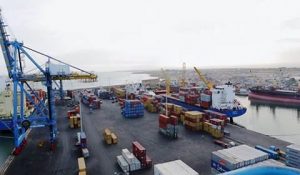
October 6, 2017//-The African Development Bank (AfDB) has released its second Trade Finance in Africa survey report: ‘Trade Finance in Africa: Overcoming Challenges‘.Building on the findings of the maiden 2013 survey, this new report (covering the period 2013–2014) goes even further to gauge other aspects of bank-intermediated trade finance, such as the challenges encountered by SMEs and first time trade finance clients. The report is therefore based on the combined data from the 2013 and 2015 surveys.
The report’s main findings
- The value of bank-intermediated trade finance in Africa in 2013 and 2014 is estimated at US $430 billion and US $362 billion, respectively. Put differently, banks support about one third of total trade in Africa.
- The share of bank-intermediated trade finance devoted to intra-African trade is still modest. In 2014, only 20% of bank-intermediated trade finance was devoted to intra-African trade. This compares favourably to the estimated 18% in 2011. Banks in East and Southern Africa reported the highest share (25%) while those in North and Central Africa reported the lowest, around 5% and 4%, respectively.
- The value of the bank-intermediated trade finance gap in Africa remains significant at an estimated US $91 billion in 2014, although it has nudged down slightly from an estimated US $94 billion in 2013.
- Trade finance continues to be a relatively low-risk activity for commercial banks in Africa. The estimated default rate on trade finance transactions in 2011 and 2014 were 4 and 5%, respectively, compared to 9 and 12% Non-Performing Loan (NPL) ratios for all bank asset classes. The trade finance default rates are lower for banks in Southern (2%), East (3%), and North (4%) Africa compared to banks in Central (9%) and West (7%) Africa.
- SMEs account for only 28% of banks’ total trade finance portfolio. The relatively low share could be attributed to the higher risk perception associated with this client segment. Indeed the average trade finance default rate of SMEs was 14% in 2014, far higher than the overall trade finance default rate of 5% for the same period.
- First time applicants face significant challenges in accessing trade finance facilities from banks. Only 15% of banks’ trade finance portfolio is composed of new applicants, although the default rate attributed to these clients was only 3% in 2014.
- The report also reveals that the major reasons why banks reject trade finance demands include poor creditworthiness and lack of adequate collateral.
The report recommends that a win-win partnership and a collaborative approach involving development partners is needed to overcome the challenges of access to trade finance faced by financial institutions and the private sector in Africa.
Commenting on this second report, AfDB Director of Financial Sector Development Department Stefan Nalletamby explained that the Bank’s Trade Finance Program (TFP) was set up in 2013 to help address some of the challenges once again highlighted in this report. The African Development Bank has so far supported more than US $5 billion of trade involving 90 banks in 25 African countries. The key sectors supported are agriculture (22%) and manufacturing (25%). Intra-African trade represented at least 20% of total trade supported.
These achievements, he concluded, “are clear indications that trade finance can be an effective vehicle for driving the Bank’s High 5 priority goals such as ‘Feed Africa’, ‘Industrialise Africa’ and ‘Integrate Africa’, respectively.”
African Eye Report


